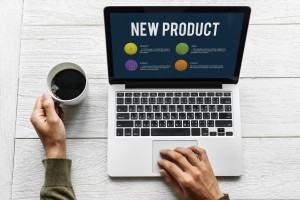
 Become a PowerPoint Guru by Dave Tracy
Become a PowerPoint Guru by Dave Tracy
Learn the methodologies, frameworks, and tricks used by Management Consultants to create executive presentations in the business world.

 Become a PowerPoint Guru by Dave Tracy
Become a PowerPoint Guru by Dave Tracy
 Warehousing costs at most firms are extraordinarily higher than they ought to be. Across the world, organizations spend around €300 billion annually on Warehouse Management. With the boom in online retail stores and the increasing complexity of Supply Chain Management, this spending is going to surge further.
Warehousing costs at most firms are extraordinarily higher than they ought to be. Across the world, organizations spend around €300 billion annually on Warehouse Management. With the boom in online retail stores and the increasing complexity of Supply Chain Management, this spending is going to surge further.
The leadership at these organizations understands that they should spend less on Warehousing operations, but is not aware of the real costs associated with it. Most leaders are unable to tell how much is their human resources cost per facility.
Lack of appreciation of true Warehousing operations costs is one of the main reasons for failure of most Business Transformation programs. Without this knowledge, the leadership is unable to comprehend where the improvement areas lie and how much value creation can be achieved from those.
Ascertaining these costs warrants a clear approach, which many organizations lack. Most firms inquire about their operational costs from 3rd party Logistics (3PL) providers—by soliciting requests for quotations (RFQs). However, this does not give an idea of what these principal activities really cost. The most common approaches to Warehouse costing include:
The Benchmarking method uses a top-down approach to analyze costs based on industry benchmarks. However, accessibility of benchmarks at lower levels is hard to access, since benchmarks available for comparison are predominantly at high levels—e.g., Total Warehouse Cost as a proportion of Cost of Goods Sold. Industry Benchmarking fails to take into consideration distinct product or service offerings.
Cleansheet (or a Bottom-up Analysis) is a more comprehensive method to estimate Warehousing costs. It is a numerical approach to ascertain precise costs of critical components of Warehousing operations, including facility spread out, workforce, and equipment. This method facilitates in understanding where the cost exceeds and how it can be eliminated.
The focus of the Cleansheet Analysis is on determining the lowest possible cost of each major element, and comparing it with the actual cost being paid. Identifying the lowest costs of major elements allows the organization to determine the most problematic areas and confront major cost inconsistencies.
The Cleansheet Analysis comprises of 3 main steps:
Let’s dig a bit deeper into the initial step.
The first step of the Cleansheet Analysis entails scoping the Warehousing facility’s configuration, work, team, volumes, and orders. Specifically, this includes evaluating:
Interested in learning more about the steps to using a Cleansheet Analysis? You can download an editable PowerPoint presentation on Warehouse Costing: Cleansheet Analysis here on the Flevy documents marketplace.
You can download in-depth presentations on this and hundreds of similar business frameworks from the FlevyPro Library. FlevyPro is trusted and utilized by 1000s of management consultants and corporate executives. Here’s what some have to say:
“My FlevyPro subscription provides me with the most popular frameworks and decks in demand in today’s market. They not only augment my existing consulting and coaching offerings and delivery, but also keep me abreast of the latest trends, inspire new products and service offerings for my practice, and educate me in a fraction of the time and money of other solutions. I strongly recommend FlevyPro to any consultant serious about success.”
– Bill Branson, Founder at Strategic Business Architects
“As a niche strategic consulting firm, Flevy and FlevyPro frameworks and documents are an on-going reference to help us structure our findings and recommendations to our clients as well as improve their clarity, strength, and visual power. For us, it is an invaluable resource to increase our impact and value.”
– David Coloma, Consulting Area Manager at Cynertia Consulting
“As a small business owner, the resource material available from FlevyPro has proven to be invaluable. The ability to search for material on demand based our project events and client requirements was great for me and proved very beneficial to my clients. Importantly, being able to easily edit and tailor the material for specific purposes helped us to make presentations, knowledge sharing, and toolkit development, which formed part of the overall program collateral. While FlevyPro contains resource material that any consultancy, project or delivery firm must have, it is an essential part of a small firm or independent consultant’s toolbox.”
– Michael Duff, Managing Director at Change Strategy (UK)
For many companies, developing new products is a hit-or-miss proposition. Successful innovation–the kind that leads to customer engagement  and profits–is rare and hard to achieve. Some have tried investing intensively in research and development.
and profits–is rare and hard to achieve. Some have tried investing intensively in research and development.
In a recent study conducted by booz&co. on public companies representing almost 60% of global R&D expenditures, it was found out that there is generally no correlation between R&D spending and financial metrics such as sales or profit growth. Open innovation has been resorted to by some companies but this, too, does not necessarily lead to higher innovation returns. A strategy of tacit benchmarking has also been pursued. Near the average amount of R&D spending has been invested but this led to a greater number of minor product line extensions with often diminishing returns.
On the other hand, there are companies that do best at dreaming up great new products while spending less to do it. One of these is Apple, which commits 5.9% of sales to R&D, less than its industry’s average of 7.6%. This shows that, when it comes to innovation investment, the key question is not how much to spend but how to spend it.
Indeed, innovation success depends on mysterious factors. But there are companies that can overcome these hurdles and regularly product high-yield innovations. The answer is the use of the best approach in determining which innovation success and why others fail.
The Innovation Effectiveness Curve is the marginal return on innovation investment. It represents the individual innovation profile of the company. It is the value and quality of a company’s innovation portfolio.
The Innovation Effectiveness Curve is done on a project-by-project basis. It contains data about every active project in the pipeline of the company. Each point represents a return on innovation investment for a particular project.
Organizations must be able to understand their project portfolio and diagnose their innovation practices and capabilities to be able to create an Innovation Effectiveness Curve. This is essential as the height of the curve provides a definitive verdict on the power of the innovation capability to drive returns and generate growth.
An Innovation Effectiveness Curve must be Comprehensive, Stable, and correlates with Growth.
When the 3 Core Properties are in place, this makes the Innovation Effectiveness Curve a very powerful analytical tool. On the other hand, when these core properties are not in place, the Innovation Effectiveness Curve falters. This is a signal that growth is slow or may slow down. This is one occurrence not one organization would like to happen.
Interested in gaining more understanding of Innovation Effectiveness Curve and how your organization can strategically use it as a powerful analytical tool? You can learn more and download an editable PowerPoint about Innovation Effectiveness Curve here on the Flevy documents marketplace.
Are you a management consultant?
You can download this and hundreds of other consulting frameworks and consulting training guides from the FlevyPro library.
LearnPPT has finally released a new business document. It’s called the Complete Consulting Frameworks Toolkit and that name is not an understatement. The document is currently only available for download on Flevy.
This is a VERY comprehensive document with over 300+ slides–covering 50 common business frameworks and methodologies (listed below in alphabetical order). A detailed summary is provided for each framework. The included frameworks span across Corporate Strategy, Sales, Marketing, Operations, Organization, Change Management, and Finance.
Here is the full list of included frameworks and methodologies:
These frameworks and templates are the same used by top tier consulting firms. With this comprehensive document in your back pocket, you can find a way to address just about any problem that can arise in your organization.
For other, more in-depth business methodology framework and methodology documents, take a look here:
Over the past couple weeks, a ton of new business frameworks, covering topics from the 5S framework to Kaizen principles to benchmarking, have been added to Flevy. Flevy is a marketplace of premium business documents, which include business frameworks, financial models, PowerPoint templates, market research reports, and other similar documents.
Error: Twitter did not respond. Please wait a few minutes and refresh this page.